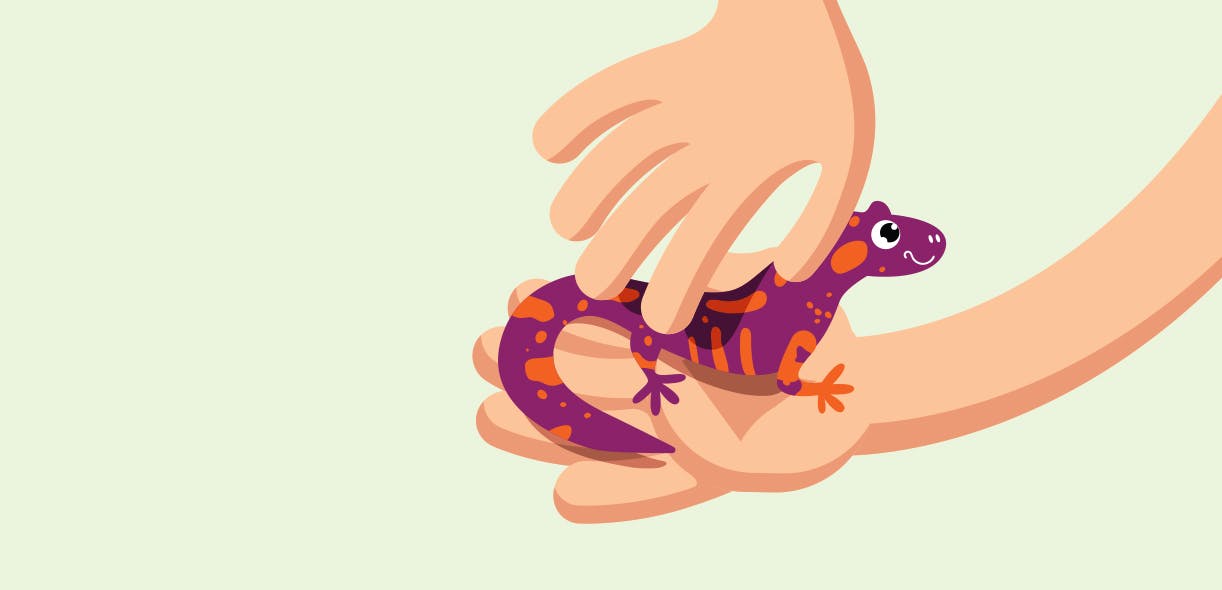I had never considered keeping salamanders; I don't think I even knew what one was until an animal physiology lab at university. In each practical class we dissected a vertebrate, starting with a dogfish and massacring every class of vertebrate, concluding with the obligatory rat. At least we didn't have to kill the poor creatures; they were delivered to us freshly slaughtered. We had butchered dogfish and trout on previous sessions and this lesson we walked in to find what looked like plastic toys on our dissection trays. Beautiful, glossy, black, newt-like creatures with vivid yellow splodges.
I squeamishly followed the dissection instructions and cut open a sack to reveal a wriggling mass of tadpoles which I carefully transferred into a beaker of water before proudly presenting them to Professor Potts. At the end of the lab I asked him if I could keep some and carried five precious tadpoles back to my room where they lived in a plant propagator set up as a vivarium. I had kept frog tadpoles as a kid and fed them on dried Daphnia from the pet shop. They got bigger and bigger but showed no sign of metamorphosing. Before the days of the internet we had to rely on paper based information sources. One such source, told me that they needed thyroxine to change. In the absence of a source of thyroxine I put drops of iodine in the water. I don't know if that was the trigger, but two changed from the dull brown, gilled larvae to beautiful glossy fire salamanders. The others didn't make it.
Once metamorphosed, the problem of feeding them arose. Today live pet food is easily available but not then. I bought live blowfly maggots sold as fishermen's bait and they were happy to eat them, supplemented with earthworms. My small residence room had become a bit of a menagerie. There were the two salamanders, a tank with two South American terrapins (Podocnemis unifilis) and a cage of Mongolian jirds (gerbils). One weekend I was away and a laconic Liverpudlian called Ivan asked if he could sleep in my room as his family were staying for the weekend. He wanted to show his little brother the animals and showed them off, revelling in his revulsion at the wriggling mass of maggots in the plastic box.
Ivan staggered back to my room after a night in the student bar and slid under the sheets only to leap out of bed. He threw back the sheets to reveal the bed was full of maggots. He'd not put the lid back on and they had dropped off the shelf onto the bed and sought out a dark place! Six months later, the domestic bursar collared me and demanded to know if any of my animals had escaped and died. Of course not, I insisted, and I wasn't lying. However the escaped maggots had pupated under the wardrobe and when the heating was turned on they had hatched, infesting the room, to the next occupant's horror.
After graduation my menagerie returned to Blackpool and took up residence in my bedroom and one salamander disappeared: I blame one of my little brothers for leaving the lid off. Weeks later I was crawling on the floor for some reason, maybe I was looking for it, and there it was, looking a bit dehydrated, but otherwise fine.
Four years after their Caesarean birth I was teaching and I brought the salamanders to school to show my pupils. I left them in the classroom overnight and the next day they were both gone. I am convinced that a kleptomaniac pupil had finished my relationship with these fabulous creatures and now, 45 years later, I can still feel that lovely cold clammy touch of their beautiful skin.
